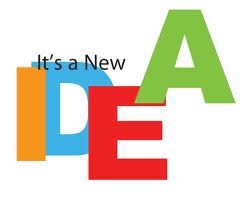Well, one of the most important elements of Seo field is the effective use of keywords.
Many webmasters ignore this tactic and then try to find out the reason
why the sites are not ranking well on Google or the other search
engines. You should use your SEO knowledge keywords
wisely and keep the important words in the title tag and the heading
tag. The points below would help you in understanding the areas where
you should focus upon in maximizing your chances of good keyword exposure.
You should use your selected keywords
on the title tag, Meta description tag and the Meta keyword tag. This
is the most important thing to consider while creating web pages. Having
your keywords in these meta tags
maximizes your chances of ranking and it also becomes easier for the
user to locate your website or web page. Remember title tag and
description tag are being used by the search engines in their SERPS
(Search Engine Result Pages) and therefore choose them wisely.
Warning- DO NOT STUFF KEYWORDS (One general point which I must cover is that please do not stuff keywords
in your webpages. Write pages for your audience and not for the search
engines. Remember the lesson is to use keywords and not overuse them.
You should use your main keywords on
the H1 tag of your page. You may also use the bold tags as the search
engine’s gives more weight to the words which are present on the H1 tag
or the bold or emphasis tag.
I would not suggest you to use
keywords in your alt tags but would definitely suggest you to provide
related alt tags to images. For example, if you are having an image
related to Joker then you must describe the alt tag as “Joker” and not
“Jo12”, “J1”,”45s” or some other useless names. Having alt tags in the
web pages adds to the usage of proper keywords on the page and
ultimately your webpage becomes a relevant page in the eyes of search
engines.
Warning: - Do not overuse keywords on alt tags but choose it wisely.
This is an important point and you must not miss this. You should use keywords in the anchor text
while linking to that web page. For example if your web page is about a
Joker then you must use the anchor text “Joker” while linking to the
web page.
Warning- Do not repeat the use of Anchor Text but use variations whenever possible or you might get penalized for this.
If you are using synonyms of the main targeted keyword on the web page then there is a greater possibility that the search engines might rate your web page more relevant to that keyword.
The point to note is that – A quality and relevant article
automatically contains some synonyms and you do not have to force
synonyms into it. But if you still do not have synonyms in your web page
then do get some.
Warning-
Overuse of synonyms and spammy article written only for the search
engines might get your website penalized. Always keep the audience in
mind and add quality stuff to your article, I am sure, synonyms will
automatically follow.
I hope you must have understood the real use of the keywords
in your web page’s content. My personal advice would be to do proper
research on the topic on which you are going to write an article and
then make it quality, include some stuff that are not written elsewhere,
include some stuff that would be useful for the audience, have some
references if you think its necessary, use proper (not spammy) title and
meta tags. Provide alt tags if you are having images and remember to
keep the anchor text clean.
http://www.seosandwitch.com






 Keyword Difficulty Check
Keyword Difficulty Check Fake PageRank Detection / Pagerank Checker
Fake PageRank Detection / Pagerank Checker Google Updates
Google Updates
